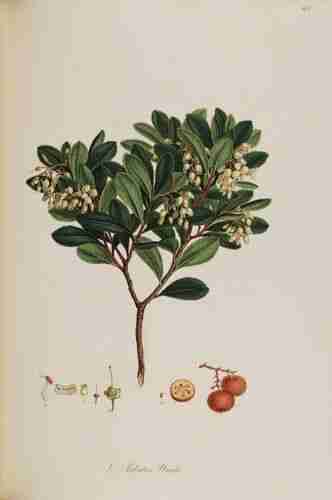! Nouveau site ici !
Vita > Plantae > Magnoliophyta > Magnoliopsida > Ericales >
Ericaceae > Arbutus
Arbutus unedo
(Arbousier)

 | ****
| ****
Vita > Plantae > Magnoliophyta > Magnoliopsida > Ericales >
Ericaceae > Arbutus
Arbutus unedo
(Arbousier)

-12/-15°C (zone 7-9)
Un petit arbre. Il peut mesurer 9 m de haut. L'écorce est brun gris foncé. Il est plutôt fibreux et squameux. Le tronc est court et les branches tordues. Les branches et rameaux plus petits sont rougeâtres.... (traduction automatique)
→suite
⬀
Le  donne accès au menu
donne accès au menu (c'est votre point de repère) 😊 ;
En dessous vous avez la classification, à partir de la vie (Vita, premier rang) jusqu'à la classe au dessus de la plante, dont vous trouvez ensuite le nom scientifique/botanique (latin) puis le nom commun (français), le cas échéant ;
C'est aussi un lien vers la fiche complète (tout comme la ✖, en bas à droite, et le +, en dessous de la description) ;
Vient alors l'illustration (ou ce qui la remplace, en attendant), la comestibilité :
Et en bas
⬂

![Illustration Arbutus unedo, Par Mordant De Launay F., Loiseleur-Deslongchamps, J.L.A. (Herbier général de l´amateur, vol. 8: t. 543 ; 1817-1827) [P. Bessa], via plsntillustrations.org Illustration Arbutus unedo, Par Mordant De Launay F., Loiseleur-Deslongchamps, J.L.A. (Herbier général de l´amateur, vol. 8: t. 543 ; 1817-1827) [P. Bessa], via plsntillustrations.org](../inc/images/illustrations/191813.jpg )



